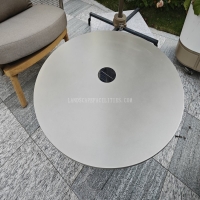Welcome to the website for landscape facilities products and knowledge.
What design considerations are made to ensure landscape tables are ergonomic for users?
Creating ergonomic landscape tables requires thoughtful design to balance aesthetics, functionality, and user comfort. Key considerations include:
1. Height and Proportion: Tables should align with standard ergonomic heights (28–30 inches for dining, 22–24 inches for coffee tables) to prevent strain. Adjustable options cater to diverse user needs.
2. Surface Shape and Size: Rounded edges reduce injury risks, while ample space accommodates movement. Oval or rectangular shapes often work best for social and workspace layouts.
3. Material Selection: Weather-resistant materials like teak or powder-coated metal ensure durability, while textured surfaces prevent slipping. Lightweight designs aid mobility.
4. Seating Integration: Tables paired with ergonomic chairs or benches should maintain a 10–12 inch gap between the seat and tabletop for legroom.
5. Accessibility: ADA-compliant designs feature knee clearance (27 inches high, 30 inches wide) and sturdy bases for users with mobility aids.
6. Environmental Harmony: Designs should blend with natural surroundings, using organic colors and shapes to reduce visual stress.
By prioritizing these elements, landscape tables can enhance comfort, accessibility, and usability in outdoor or hybrid workspaces.
Related search:

Recommendation
Outdoor stainless steel table with solar-powered ambient lighting feature - excellent design.